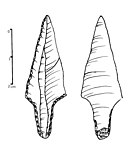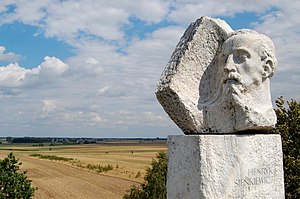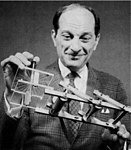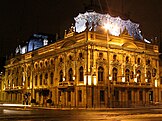Welcome to the Poland Portal — Witaj w Portalu o Polsce

 Polandis a country inCentral Europe,bordered byGermanyto the west, theCzech Republicto the southwest,Slovakiato the south,UkraineandBelarusto the east,Lithuaniato the northeast, and theBaltic SeaandRussia'sKaliningrad Oblastto the north. It is an ancient nation whose history as a statebegannear the middle of the 10th century. Itsgolden ageoccurred in the 16th century when it united with theGrand Duchy of Lithuaniato form thePolish–Lithuanian Commonwealth.During the following century, the strengthening of thegentryand internal disorders weakened the nation. In aseries of agreementsin the late 18th century,Russia,PrussiaandAustriapartitioned Poland amongst themselves. It regained independence as theSecond Polish Republicin the aftermath ofWorld War Ionly tolose it againwhen it was occupied byNazi Germanyand theSoviet UnioninWorld War II.The nation lost over six million citizens in the war, following which it emerged as the communistPolish People's Republicunder strong Soviet influence within theEastern Bloc.Awestward border shiftfollowed by forced population transfers after the war turned a once multiethnic country into a mostly homogeneous nation state. Labor turmoil in 1980 led to the formation of the independent trade union calledSolidarity(Solidarność) that over time became a political force which by 1990 had sweptparliamentary electionsand thepresidency.Ashock therapy programduring the early 1990s enabled the country to transform its economy into one of the most robust in Central Europe. With its transformation to a democratic, market-oriented country completed, Poland joinedNATOin 1999 and theEuropean Unionin 2004, but has experienced aconstitutional crisisanddemocratic backslidingsince 2015.
Polandis a country inCentral Europe,bordered byGermanyto the west, theCzech Republicto the southwest,Slovakiato the south,UkraineandBelarusto the east,Lithuaniato the northeast, and theBaltic SeaandRussia'sKaliningrad Oblastto the north. It is an ancient nation whose history as a statebegannear the middle of the 10th century. Itsgolden ageoccurred in the 16th century when it united with theGrand Duchy of Lithuaniato form thePolish–Lithuanian Commonwealth.During the following century, the strengthening of thegentryand internal disorders weakened the nation. In aseries of agreementsin the late 18th century,Russia,PrussiaandAustriapartitioned Poland amongst themselves. It regained independence as theSecond Polish Republicin the aftermath ofWorld War Ionly tolose it againwhen it was occupied byNazi Germanyand theSoviet UnioninWorld War II.The nation lost over six million citizens in the war, following which it emerged as the communistPolish People's Republicunder strong Soviet influence within theEastern Bloc.Awestward border shiftfollowed by forced population transfers after the war turned a once multiethnic country into a mostly homogeneous nation state. Labor turmoil in 1980 led to the formation of the independent trade union calledSolidarity(Solidarność) that over time became a political force which by 1990 had sweptparliamentary electionsand thepresidency.Ashock therapy programduring the early 1990s enabled the country to transform its economy into one of the most robust in Central Europe. With its transformation to a democratic, market-oriented country completed, Poland joinedNATOin 1999 and theEuropean Unionin 2004, but has experienced aconstitutional crisisanddemocratic backslidingsince 2015.
From Polish history –
Selected image –
Did you know –
- ... that theSzombierki Heat Power Station(pictured)is considered one of the "Seven Architectural Wonders of theSilesian Voivodeship"?
- ... thatSzlama Ber Winerescaped the work commando at theChełmno extermination campand managed towrite a reportabout his experience soon before his and his family's death in thegas chambersofBełżec?
- ... thatEwa Ziarek,aPolish Americanphilosopher, wrote the bookAn Ethics of Dissensus?
- ... that after missing the whole of 2009 through injury,mixed martial artistJan Błachowiczreturned atKSW XIIIto defeat two opponents on the same night?
You can help!
Selected biography –
Selected location –
Poland now
Recent events
- On 9 July,Jerzy Stuhr(pictured),a prominent theatre and film actor and director, died at the age of 77.
- Poland at the 2024 European Athletics Championships:






- On 10 June,Natalia Kaczmarekwon a gold medal in400-meter dash.
- On 9 June,Wojciech Nowickiwon a gold medal inhammer throw.
- On 9 June, the rulingCivic Coalitionwon theEuropean Parliament election in Poland.
- On 8 June, Polish tennis playerIga Świątekwon the2024 French Open,her fifthGrand Slamsingles title.
Ongoing
Constitutional crisis•Belarus–EU border crisis•Ukrainian refugee crisis•Polish farmers' protests
Holidays and observances in July 2024
(statutory public holidays in bold)
- Battle of Grunwaldanniversary(reenactors pictured),15 July
Subcategories
Topics
Related portals
| Belarus | Czech Republic | Germany | Lithuania | Russia | Slovakia | Ukraine |
| Europe | Catholicism | Communism | European Union |
Associated Wikimedia
The followingWikimedia Foundationsister projects provide more on this subject:
-
Commons
Free media repository -
Wikibooks
Free textbooks and manuals -
Wikidata
Free knowledge base -
Wikinews
Free-content news -
Wikiquote
Collection of quotations -
Wikisource
Free-content library -
Wikiversity
Free learning tools -
Wikivoyage
Free travel guide -
Wiktionary
Dictionary and thesaurus
Wikipedias in the languages of Poland
| Kaszëbskô Wikipedijô KashubianWikipedia |
Polska Wikipedia PolishWikipedia |
Ślůnsko Wikipedyjo SilesianWikipedia |
Wymysiöeryś Wikipedyj VilamovianWikipedia Incubator |






























